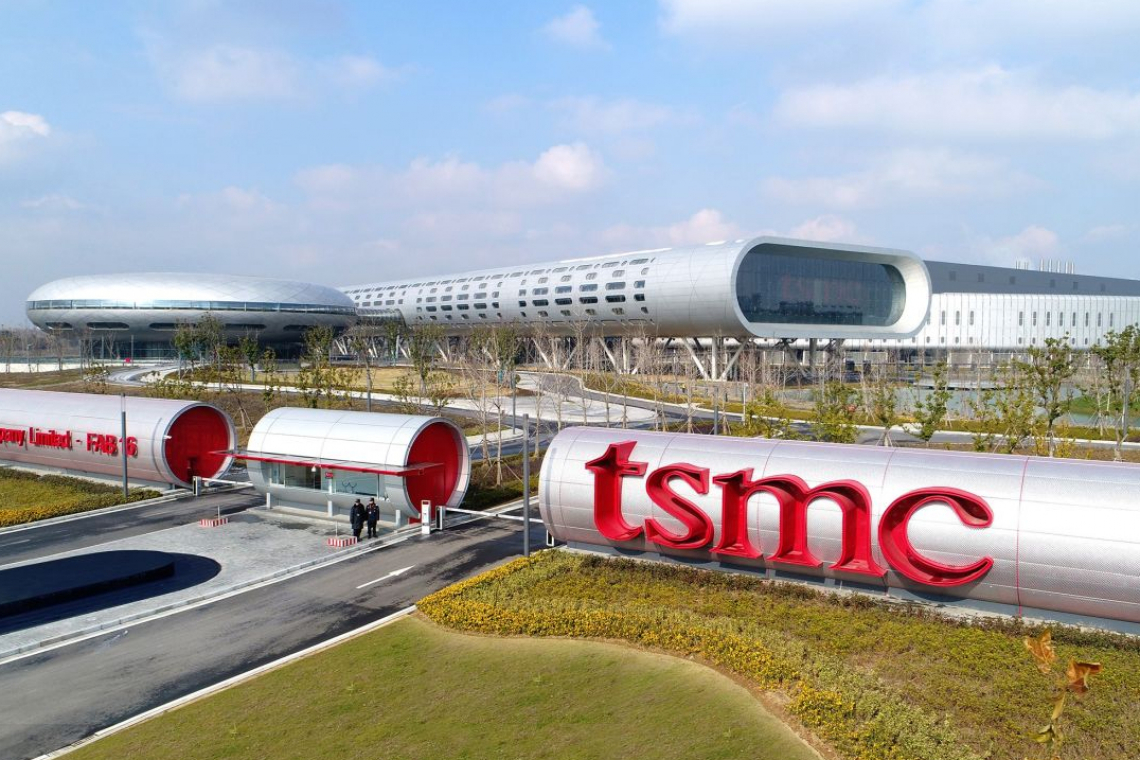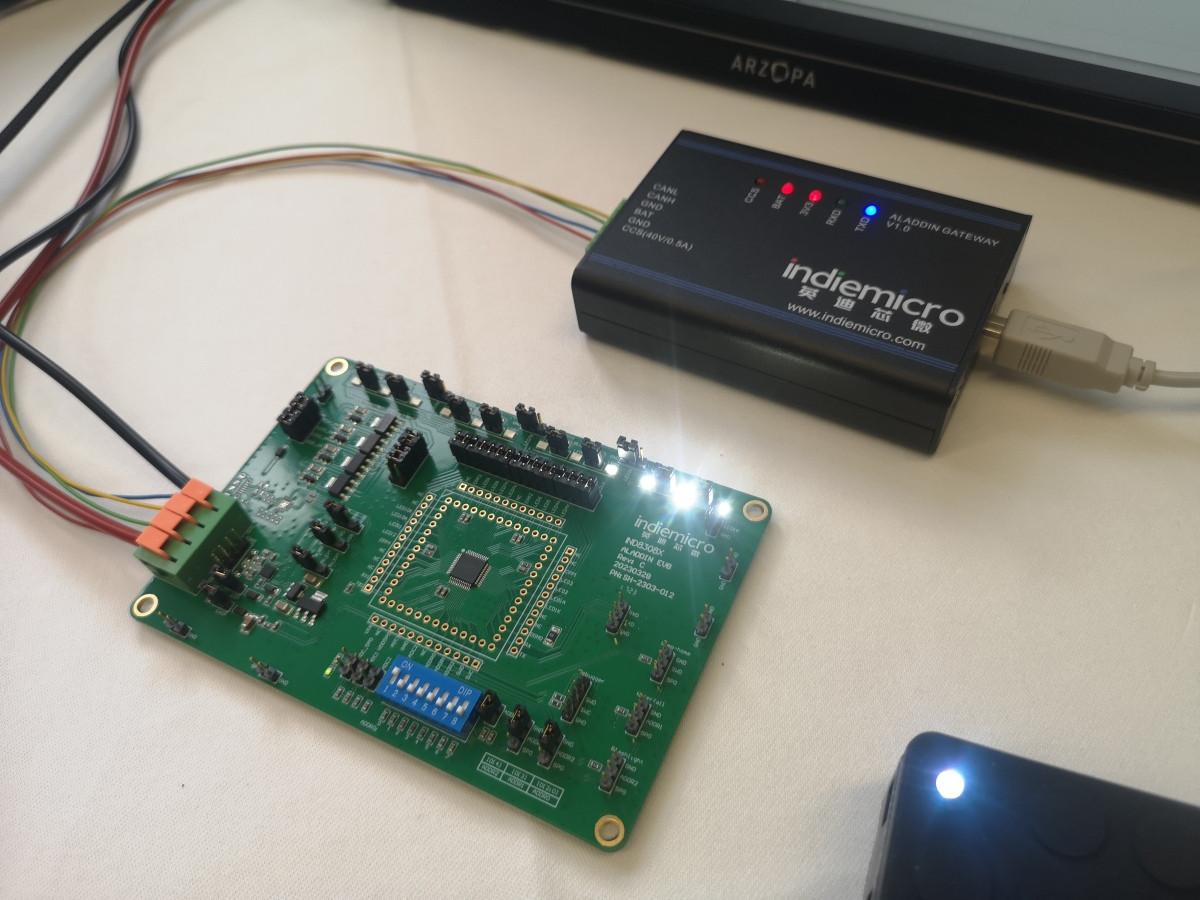Following TSMC's decision to build a €10 billion chip factory in Dresden together with European partners, debates are now in full swing in Saxony about the supply of skilled workers, the consumption of resources for such 'mega-fabs', subsidies and transport links. There are concerns that the state subsidies and the labor pull of the Taiwanese factory could ultimately be at the expense of the region's small and medium-sized enterprises. On the other hand, there are growing calls within the industry itself to take a much more systematic approach to recruiting national and international skilled workers, to network the city of Dresden more closely with the surrounding districts in terms of infrastructure and also to greatly expand vocational school capacities for microtechnologists and mechatronics engineers. All in all, however, many Saxons are expecting an enormous boost from the establishment of the world's largest semiconductor contract manufacturer.
Initial reactions to the TSMC announcements were enthusiastic. "I am happy and proud that the Free State of Saxony has been able to convince us with its locational advantages and that TSMC, one of the world's leading chip manufacturers, wants to set up its first European semiconductor plant in Saxony," said Saxony's Minister President Michael Kretschmer (CDU), for example, welcoming the Taiwanese company's decision. "Robust domestic semiconductor production is of particular importance for our global competitiveness, because semiconductors keep our world running and make the transformation towards climate neutrality possible in the first place," said Federal Minister of Economics Robert Habeck (Greens). "TSMC's investment will therefore make a substantial contribution to securing the supply of semiconductor chips for Germany and Europe." Saxony's state economic development agency (WFS) spoke of a "real quantum leap not only for the location, but also for Germany and Europe as a whole".
This may hardly come as a surprise, as the large-scale settlement has a quality all of its own: Europe's microelectronics industry is thus networking with the major players in the Far East to a much greater extent than before. This is also reflected in the fact that - rather unusually for TSMC - the group does not want to build and operate its new mega-factory alone, but as a joint venture with Infineon, Bosch and NXP - even though the Taiwanese will have the say. After ramping, the factory will produce up to 40,000 300-millimeter-class silicon wafers per month to produce chips with structure sizes between 28 and 12 nm (millionths of a millimeter). One of the superlatives of the whole story, however, is the subsidies: The federal and state governments have pledged to jointly contribute 50% (!) of the €10 billion investment from taxpayers' money. No semiconductor company has ever negotiated such a high subsidy rate under the European Chips Act, not even Intel.
Hope and fear among SMEs
"The East Saxon skilled crafts sector will also benefit directly and indirectly from the billion-euro investment by TSMC, the world's highest-selling semiconductor manufacturer," says Jörg Dittrich, President of the Chamber of Skilled Crafts. At the same time, however, he points to the shortage of skilled workers, which often reaches small businesses much earlier than large corporations. "We now need to make progress on the issue of skilled worker development and controlled immigration of skilled workers."
Skilled labor problems are at the top of the agenda
Promising approaches are emerging to tackle the problem of skilled workers in the growing semiconductor industry in Saxony and throughout Germany. On the one hand, the Saxons are planning special student and researcher exchange programs with Taiwan in order to adapt local young academics to the curriculum that TSMC is used to at home.
On the other hand, the Federal Ministry of Education and Research and the Center for Advanced Electronics Dresden (Cfaed) are launching the 'Forlab Natalie' project. The project, which is endowed with €2.1 million from the Federal Ministry of Education and Research, aims to "increase the visibility of microelectronics research at universities, accelerate the transfer of technology into applications and promote the training of young scientists beyond university boundaries", according to TU Dresden, where Cfaed is based. The project partners include the universities of Bochum and Ilmenau.
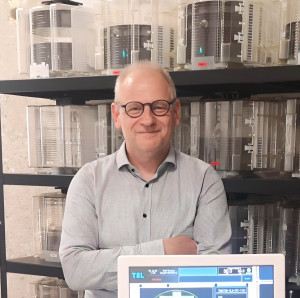 Prof. Thomas MikolajickProjectcoordinator Prof. Thomas Mikolajick from Dresden announced that 'Forlab Natalie' will include pilot projects to promote young talent. "We will initiate cross-university formats for student training and the recruitment of young talent as examples of best practice throughout Germany and network with national and European training initiatives such as the Microelectronics Academy of the Research Fab Microelectronics Germany (FMD)."
Prof. Thomas MikolajickProjectcoordinator Prof. Thomas Mikolajick from Dresden announced that 'Forlab Natalie' will include pilot projects to promote young talent. "We will initiate cross-university formats for student training and the recruitment of young talent as examples of best practice throughout Germany and network with national and European training initiatives such as the Microelectronics Academy of the Research Fab Microelectronics Germany (FMD)."
But there are also many infrastructural challenges to overcome. For example, Managing Director Frank Bösenberg from the Saxon microelectronics industry association 'Silicon Saxony' is calling for Dresden to cooperate more closely with the neighboring districts of Bautzen and Meißen so that the currently very dynamic development in the Saxon high-tech industry is not slowed down by all kinds of practical problems. For example, the towns and villages surrounding the chip industry in the north of Dresden need to be better connected by suburban trains, buses and other means of transport. This would then open up new opportunities for skilled workers employed in Dresden's chip factories to live around the city. Additional school and daycare capacities would also have to be considered. "If we get this right, the entire region and rural areas will benefit."
Taiwanese bring new circuit expertise to Europe
In any case, the new factory should bring additional technological expertise to Europe and harden the supply chains in the German automotive industry - at least with regard to the supply of automotive electronics. Although the fab in Dresden will not be equipped with the very latest TSMC production technologies of the 3 nm generation, the added value for the local industry should not be underestimated if 12 nm automotive circuits will soon be available locally. Moreover, the structure size does not tell the whole story: In terms of layer structure, use of materials and not least in terms of chiplet methodology, TSMC is way ahead of pretty much all European chip factories. And the thought is obvious: once the Taiwanese have invested so much money in a mega-fab in Germany, close to important customers from the automotive industry, they will most likely also retrofit the Dresden fab with newer equipment later in the next generation cycle - so that sub-10 nm technology could then come to Saxony after all.
Semiconductor alliance 'Esra' founded
However, the expectation behind this is that the latest investments by Intel, Infineon, TSMC and other players will also give the European Chip Act more momentum. This is why Saxony and 26 other European microelectronics regions have now forged a 'European Semiconductor Regions Alliance' (Esra). The new alliance is primarily intended to represent the interests of European high-tech regions at the EU Commission when it comes to the distribution of microelectronics subsidies. However, Esra is also intended to create new value-added networks in Europe, promote microelectronics research, reduce the shortage of skilled workers in the semiconductor industry and find new ways to meet the growing demand of chip factories for water, electricity and other resources in the most environmentally friendly way possible.
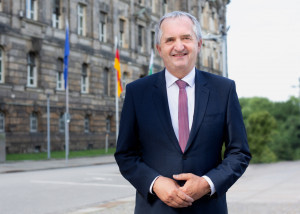 Thomas SchmidtAlsoon the Ezra agenda are the much-discussed calls for Europe to become less dependent on disruptive supply chains from Asia and America. "Digitalization, the energy transition, electromobility, artificial intelligence - we can only master these burning challenges if the necessary chips are available at all times," argued Saxony's Minister of Economic Affairs Martin Dulig (SPD). "At the moment, the main issue is to free ourselves from our high dependence on the American and, in particular, the Asian/Chinese market."
Thomas SchmidtAlsoon the Ezra agenda are the much-discussed calls for Europe to become less dependent on disruptive supply chains from Asia and America. "Digitalization, the energy transition, electromobility, artificial intelligence - we can only master these burning challenges if the necessary chips are available at all times," argued Saxony's Minister of Economic Affairs Martin Dulig (SPD). "At the moment, the main issue is to free ourselves from our high dependence on the American and, in particular, the Asian/Chinese market."
"Now that the European Chips Act has been passed, it's all about implementation, setting up new production facilities, strengthening research and training skilled workers."
Saxon Regional Minister Thomas Schmidt
For their part, the Flemish - who operate one of the largest semiconductor research centers in the world, Imec in Leuven - are focusing on innovation and microelectronics research in particular: "For the Flemish government, research and development are of the utmost importance and value," emphasized Jan Jambon, Minister-President of Flanders. It is important to "complement innovation with a new model of cooperation between knowledge institutions, industrial players and regional decision-makers".
Esra's founding members include Baden-Württemberg, Bavaria, Hamburg, Hesse, Lower Saxony, Saxony, Saxony-Anhalt, Saarland, Schleswig-Holstein and Thuringia in Germany, Andalusia, Basque Country, Valencia and Catalonia in Spain, Flevoland and North Brabant in the Netherlands, Carinthia and Styria in Austria, the Centro region in Portugal, Flanders in Belgium, Auvergne-Rhône-Alpes in France, Piedmont in Italy, Tampere and Helsinki in Finland, South Moravia in the Czech Republic, Wales in the United Kingdom and the Republic of Ireland.
New Jenoptik factory now ready for shell construction
In addition to major investments, the expansion and new construction projects of medium-sized players in the Central German technology region are also growing. Jenoptik, for example, has now completed the shell of its new micro-optics factory in Dresden and is already increasing its workforce with a view to the planned start of production at the beginning of 2025. The Thuringian company has increased its workforce in the Saxon state capital to 90 employees - by the time the factory opens in two years, it is expected to have around 120 employees.
"Dresden will become a main location for our micro-optics activities," announced Jenoptik CEO Stefan Traeger. "We are integrated into the excellent network of the semiconductor industry in Saxony, which is constantly growing." Once completed, the €70 million plant will primarily manufacture micro-optics and sensors for semiconductor lithography. Previously, these activities were spread across several small locations.
Car electronics company 'Indie' grows
The car chip company 'Indie' is also expanding its Dresden site once again. The planned investments are intended to strengthen chip design and the circuit test center in Saxony. The microelectronics specialists are planning to invest a further €3 million in new testing and inspection technology for automotive, industrial and radar circuits if the Californian parent company agrees. There are also plans to expand the workforce in Dresden from the current 35 to around 50 chip designers, quality engineers and other specialists within a year and a half.
Since its foundation in 2020, the German subsidiary of the US company 'Indie Semiconductor' has already achieved quite dynamic growth. Since then, the company has taken on more and more new tasks within the group of companies and rented and equipped new laboratories in Dresden. In total, the company has invested around €3 million in laboratory equipment alone. Last but not least, the German subsidiary has now had daughters and granddaughters itself: in 2022, Indie Germany took over the radar chip company Symeo with 67 employees. And this in turn bought the 40-strong electronics company 'Silicon Radar', whose roots ultimately go back to VEB Halbleiterwerk Frankfurt/Oder. This new technology conglomerate is managed from Dresden.
New entry into processor design with RISC V
Meanwhile, after a long break, Dresden microelectronics institutes are now getting back into processor design in order to make Europe less dependent on the chip giants in the USA and the Far East. In addition to experiments with neuro and quantum processors, the focus is primarily on the RISC-V architecture. Engineers at the independent Barkhausen Institute and the Fraunhofer Photonics Institute (IPMS) in Dresden are primarily relying on this freely usable and open-source 'Reduced Instruction Set Computer V'. The latter have now presented their own RISC-V processor, the 'EMSA5'. "The accessibility of RISC-V has triggered a revolution," argue the Fraunhofer experts. This is because it provides "an independent and open alternative to commercial - mostly non-European - solutions". In addition, RISC-V enables a favorable balance between energy consumption and performance. And this is particularly important for automotive electronics in electric vehicles, whose batteries should not be overloaded by the on-board computers. If used correctly, this alternative to Intel & Co. could strengthen Europe's technological sovereignty, say the Dresden microelectronics experts.
Processor design has a long tradition in Dresden: In GDR times, the Erfurt chip factories were primarily responsible for mass processor production. However, some of the development work for this - including the East German 32-bit processor replica - took place at ZMD and Robotron Dresden. After reunification, AMD also ramped up mass production of its 'Athlons' and other processors in Dresden - and eventually also built up development capacities for processor-related operating systems here. When AMD withdrew from Saxony, the Americans also closed this center, known as the OSRC. Nevertheless, a great deal of processor and operating system expertise remained in the city.
The open-source and free RISC-V architectures in particular are now seen as a beacon of hope. In this respect, an announcement by Bosch, Infineon, Nordic Semiconductor, NXP and Qualcomm is seen as a signal of change in the industry: the chip companies want to establish a joint RISC-V processor forge in Germany. The industry association 'Silicon Saxony' is hoping to possibly locate this new company in Dresden: "Such a company would fit in well here," explained Frank Bösenberg, Managing Director of the association, to 'PLUS'.
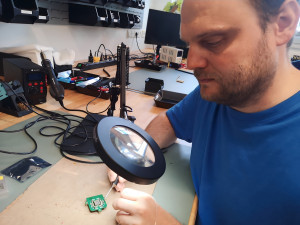 Senorics lab assistant Thomas May soldering an organic sensor onto a circuit board
Senorics lab assistant Thomas May soldering an organic sensor onto a circuit board
Organic micro-spectrometers on the rise
Meanwhile, the Dresden TU spin-off 'Senorics' is now also approaching mass production. The sensor company will soon be supplying Carl Zeiss Jena with large quantities of organic mini-spectrometers that can determine the composition of many foods, drinks, textiles and other substances without contact. For a long time, this was only possible with expensive laboratory equipment. Organic electronics, for which the TU Dresden has built up special international expertise over the past decades, now provides new solutions for building portable infrared-based spectroscopy devices in the smallest of spaces and at relatively low cost. Zeiss initially intends to use the new mini spectrometers from Saxony in agricultural systems that automatically detect the quality of feed and seed in silos. At the same time, Sensorics is preparing the series production of fist-sized mobile spectroscopy devices. These will help textile factories in India, Bangladesh and the USA to detect whether the yarn promised by the supplier is really wound onto the bobbin by simply 'holding it up'. Another product series is intended to determine the quality of legal cannabis products - also a growth market in the USA and perhaps soon in Germany too.
 About the person
About the person
Heiko Weckbrodt is a journalist and historian. He runs the Dresden-based news portal Oiger.de, which focuses on business, science and innovation policy in Saxony. He also writes guest articles for newspapers and magazines and is the author of the book "Innovation Policy in the GDR".
Sources
TSMC, Saxon State Chancellery, Oiger.de, Silicon Saxcony, Saxon. Ministry of Economic Affairs, Jenoptik, Cfaed, TU Dresden, Fraunhofer-IPMS, Sensorics

